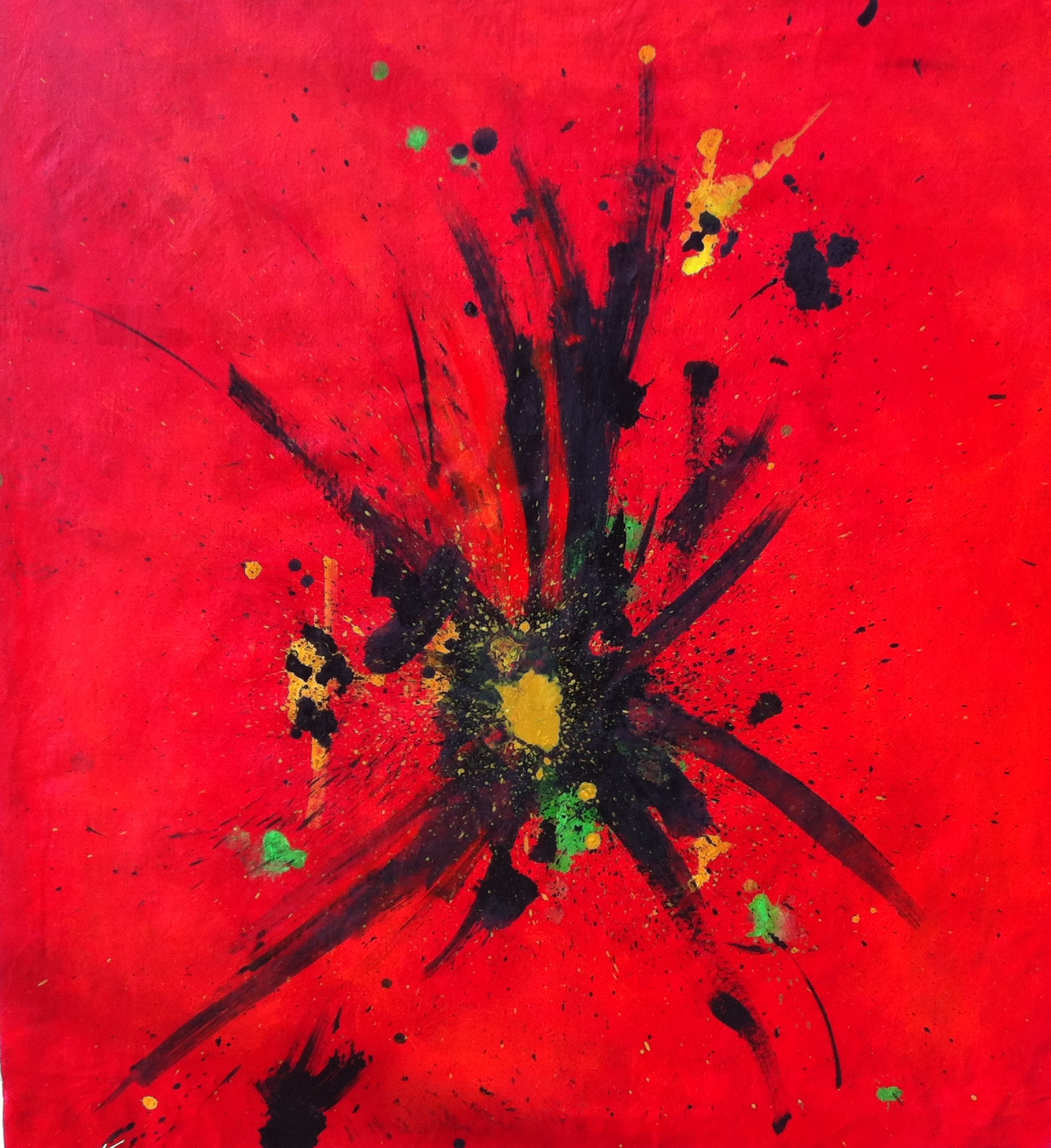“Abstraction” at Julian Beck in Bridgehampton

There’s an Old World kind of charm surrounding Bridgehampton’s Julian Beck Gallery. Now that we think about it, the venue’s Hungarian owner, Mr. Beck, also exudes a similar kind of personality. Even so, it’s not just the external elements that evoke such an atmosphere. The paintings themselves also maintain a consistent, classic presence conveying the works’ beauty, importance and staying power. What’s intriguing as well is the idea that the exhibit combines both new and older works to make a statement: abstraction endures, no matter what the country of origin or what the inspiration.
Among the older artists in the exhibit, we are drawn to Joan Miro’s untitled color lithograph, a potent reminder of the contributions that this particular artist made, with his curving forms and whimsical movement. Another color lithograph by Man Ray, “The Rope Dancer Accompanies Herself With Her Shadows,” presents block-like shapes, unlike Miro’s work, yet both capture a sense of joie de vivre. Paul Jenkins’ abstraction, a watercolor on paper, recalls a portrait of a face; it communicates the same cheerful, colorful qualities represented by Miro and Ray.
Other works evoke different sensibilities. Consider Cleve Gray, who passed away in 2004. While his aesthetic evolution took place during the period of Abstract Expressionism and the Color Field movement, it is generally agreed that his paintings remained independent and “personal.” This latter element is seen in his well-known 1972 multi-paneled mural, “ Threnody,” a “passionate response to the horrors of the Vietnam War.”
Gray’s works in the exhibit continue to convey his emotional feelings, even if they are not related to a specific event like the Vietnam War. For example, there’s “Premonition,” a single, purple-blue shape appearing against a dark background. The configuration has a potency that is not only arresting, but inspires the viewer to interpret the message. Another painting consists of red, pink and orange colors. It, too, exists on a vertical plane with several oblong and rectangular forms. The image begs to be touched. Better yet, it welcomes the spectator to enter the painting itself.
Works by Jean Miotte bring another abstract sensibility to the exhibit. Born in Paris, Miotte was influenced by such artists as Leger and did his initial abstract painting in 1950. His first New York one-man show in 1962 established his predisposition toward graphism and enlargement of space. (This critic can see such graphic tendencies in a 1949 work that evokes geometric abstraction.)
The show features Miotte’s less geometric elements, celebrating instead dabs of paint and lots of negative space. In a word, the pieces are charming: the abstract forms seem like they are falling through the air, never to land in our lifetime.
Finally, wood constructions by Charles Arnoldi add another dimension to abstraction, their non-objective shapes just as charming as the rest of the exhibit. The artist’s material plays an equal part in that charm: wood chunks on plywood; enamel on sticks; acrylic on wood block. One of our favorite works combines modeling paste, sticks, sawed logs, aluminum and branches on plywood. The abstract shapes that result are vibrant and playful, conveying energy
and verve.
The show on Abstraction will be on view at Bridgehampton’s Julian Beck Gallery, 2454 Montauk Highway, through the end of March. 631-613-6200



